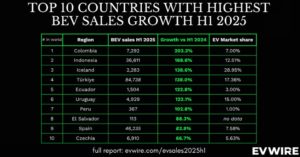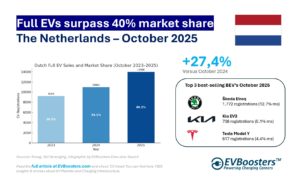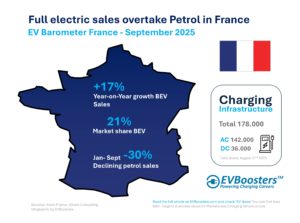The EV charging landscape is expanding rapidly
By 2030, Europe is projected to host around 38 million EV charge points, reflecting the continent’s commitment to decarbonising transport. Home chargers will dominate in number, comprising 87% of total charge points. However, public and workplace chargers will play a disproportionately significant role, delivering 57% of the energy needed for EVs despite representing only 6% of installed units.
Public chargers, with their higher power and utilisation rates, rely on advanced software systems to manage operations, billing, and smart integration with energy grids. This demand has fuelled significant growth in the CPMS market, which, according to BCG, will grow at a compound annual growth rate (CAGR) of 21%, reaching €1.050 million by 2030.
Winners and losers emerge in the CPMS market
Over the past 1.5 years, the CPMS market has undergone significant shifts. While some players have expanded aggressively, others have struggled due to strategic missteps. The fragmented European market, hosting over 50 active CPMS providers, has seen some clear trends among leaders and laggards.
- The winners:
- Player D: By focusing on medium-sized charge point operators (CPOs) in Central Europe, Player D saw its share of public charge points under management grow from 37.000 in 2022 to 61.000 in 2024. The company’s success is attributed to consistent software improvements and exceptional customer service.
- Player B: Offering a robust, independent CPMS solution along with a “CPO as a service” model, Player B increased its public charge point coverage from 32.000 to 53.000 during the same period.
- The losers:
- Player A: Once a market leader managing over 41.000 public charge points in 2022, Player A’s market share plummeted to just 17.000 by 2024. The decline was driven by failed hardware integration and a lack of regional focus.
- Player F: After acquiring third-party software in an attempt to bolster capabilities, Player F failed to deliver value to customers, leading to stagnation and a drop in public charge points from 16.000 to 15.000.
Despite the growth of standout players, the market remains fragmented, with even the top three providers collectively holding just 20% of the European market.
Five strategies for success in a competitive market
As the CPMS market continues to expand, success will hinge on the ability to innovate and adapt. BCG identifies five key strategies that providers should adopt to thrive:
Expand strategically with precision
To secure long-term success, regional champions must grow internationally, particularly in core markets like Germany, France, and the UK, which will account for over half of Europe’s public charge points by 2030.
Tailor services to customers’ needs
Understanding the specific requirements of diverse customer segments, from hotel chains to municipalities, is critical. As large CPOs reconsider outsourcing software development, CPMS providers have an opportunity to win lucrative mandates by offering bespoke solutions.
Leverage acquisitions for rapid growth
Strategic mergers and acquisitions can accelerate market entry and product expansion. For example, ChargePoint’s acquisition of has.to.be GmbH significantly strengthened its European presence and service portfolio.
Invest in R&D to stay ahead
Technological innovation remains essential. Features like dynamic pricing, AI-based maintenance, and plug-and-charge functionality will differentiate providers and unlock new revenue streams.
Adapt revenue models for higher utilisation
With increasing competition, providers should explore creative pricing models, such as bundling transaction fees with value-added services or reselling energy to smaller operators.
The path forward for CPMS providers
The European CPMS market is poised for sustained growth but remains highly competitive. Players must combine technological innovation with customer-centric strategies to capture market share. While the landscape is currently fragmented, consolidation and regional expansion will likely define the next phase of market evolution.
The winners of the future will be those who not only deliver exceptional software but also anticipate market needs and adapt swiftly. For CPMS providers, the opportunity to shape the EV revolution is immense—if they can navigate the challenges ahead.
Source: BCG







